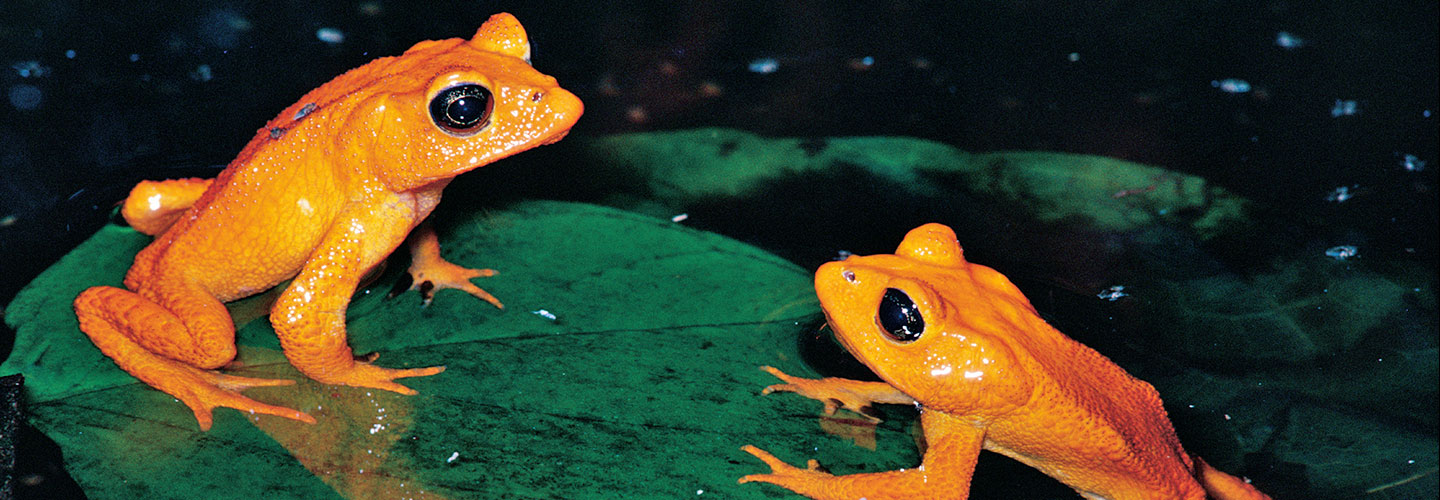In a dark forest, photographer Robin Moore shines his flashlight under a fallen tree. He’s on a mission to find species that haven’t been seen in decades. If he’s lucky, Moore will spot one of these “lost” creatures and catch it on camera. He’s already found several amphibians that scientists thought had become extinct.
Since 1980, about 200 amphibian species have died out. Today, thousands more, including frogs, toads, and salamanders, are threatened. That’s a big problem, in part because these animals eat insects that harm crops and spread disease. Geography Spin spoke to Moore about his project, “The Search for Lost Frogs.” Moore’s photos help raise awareness about amphibians and the threats they face.

